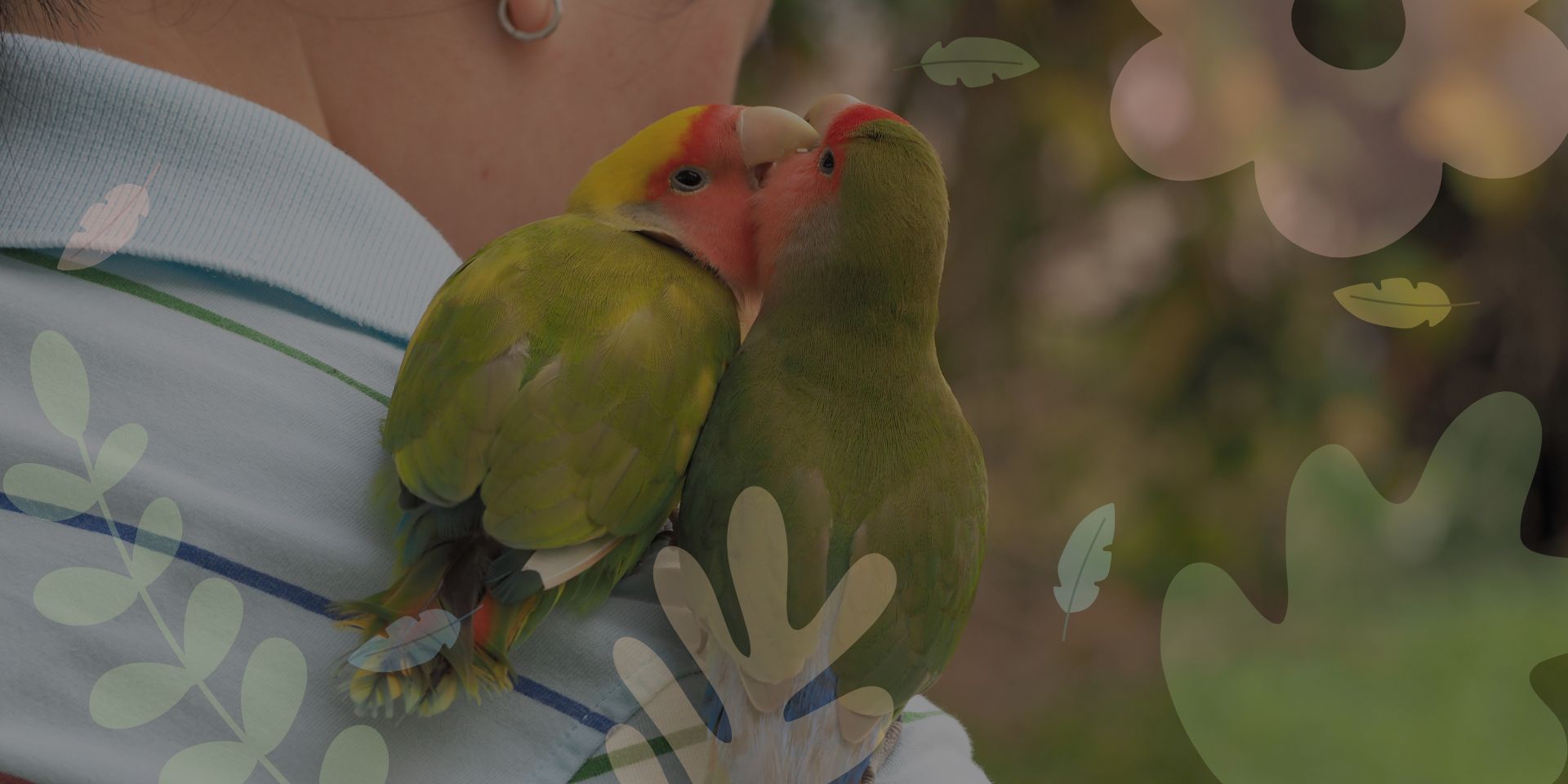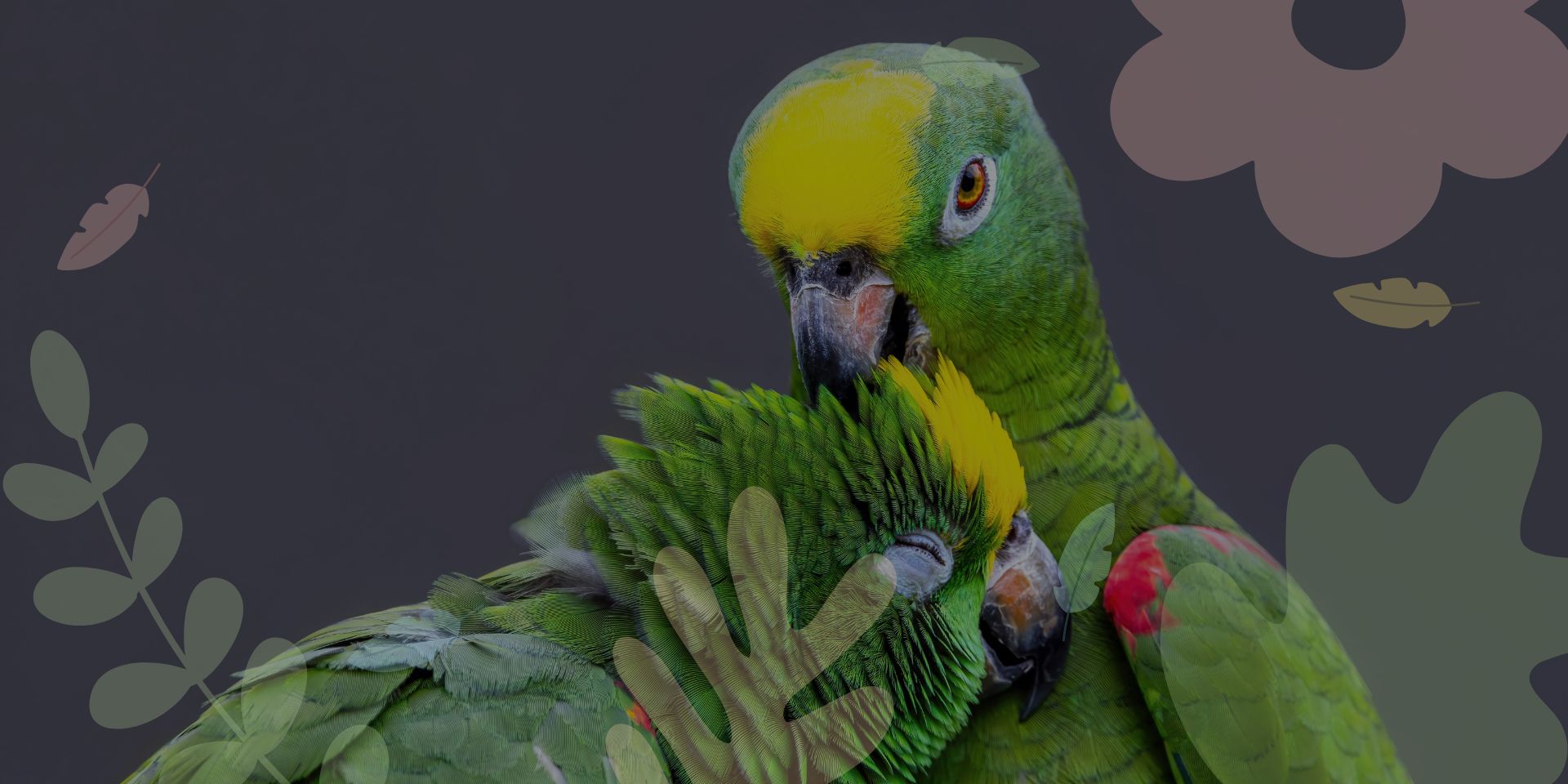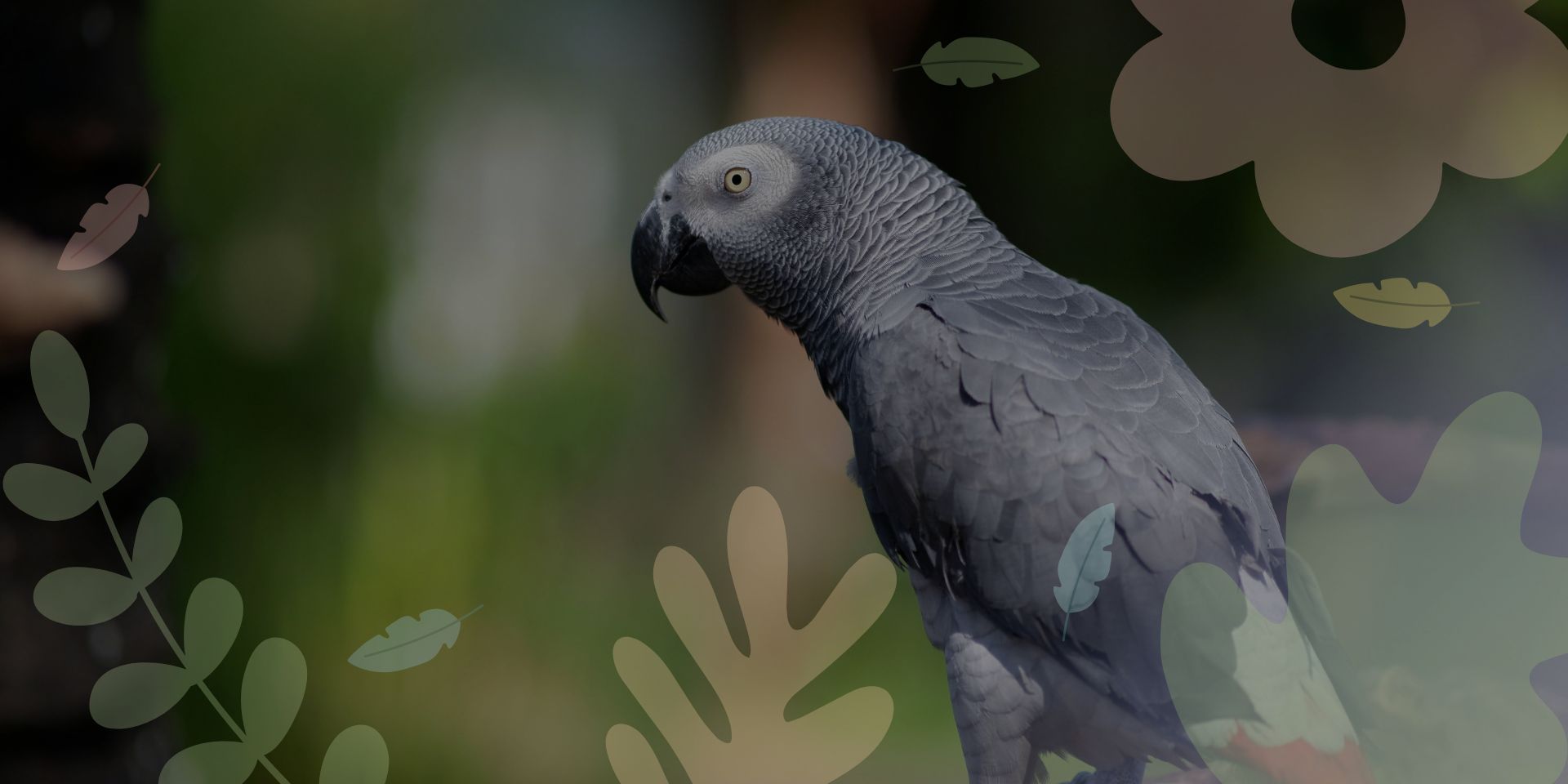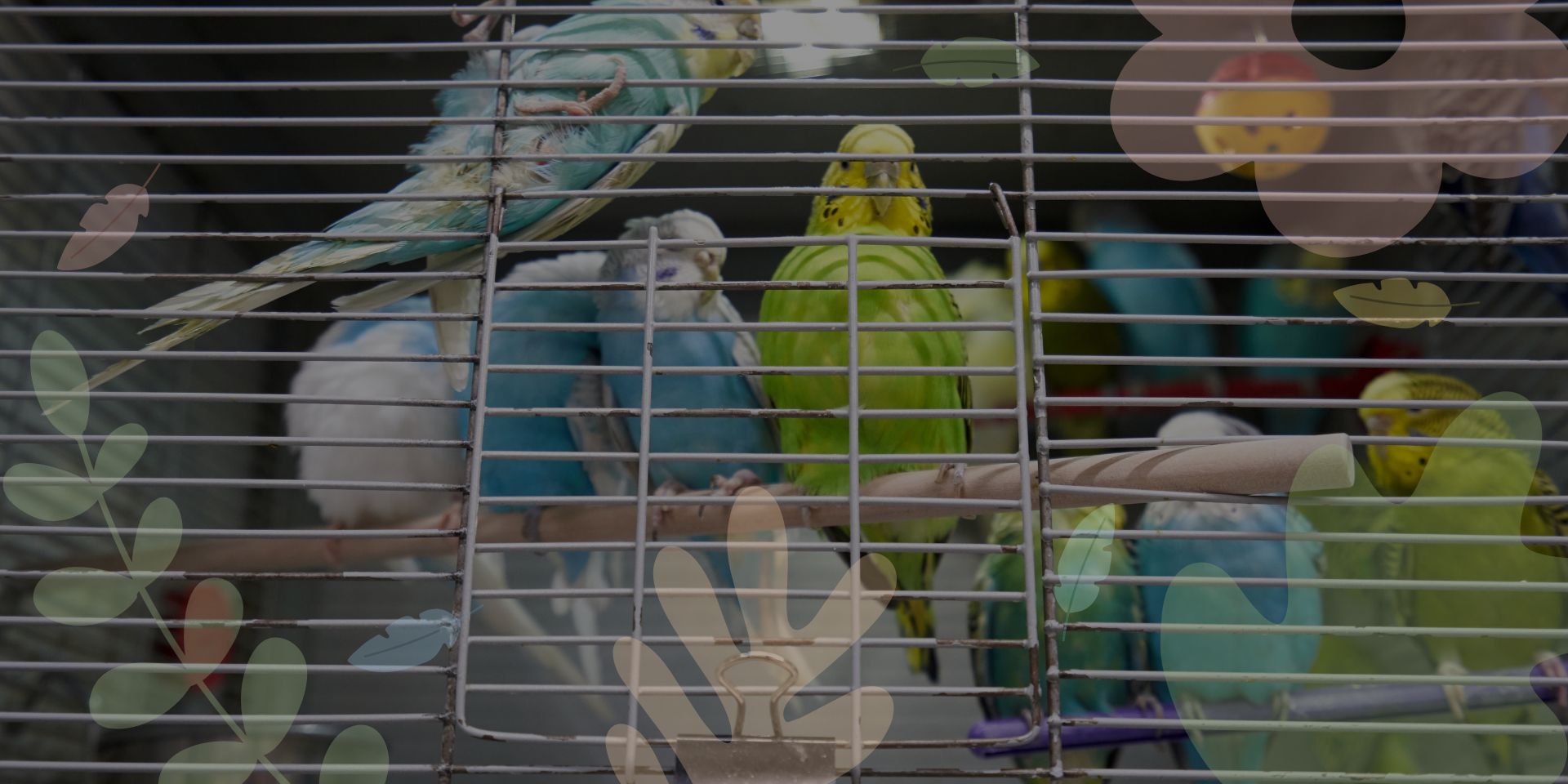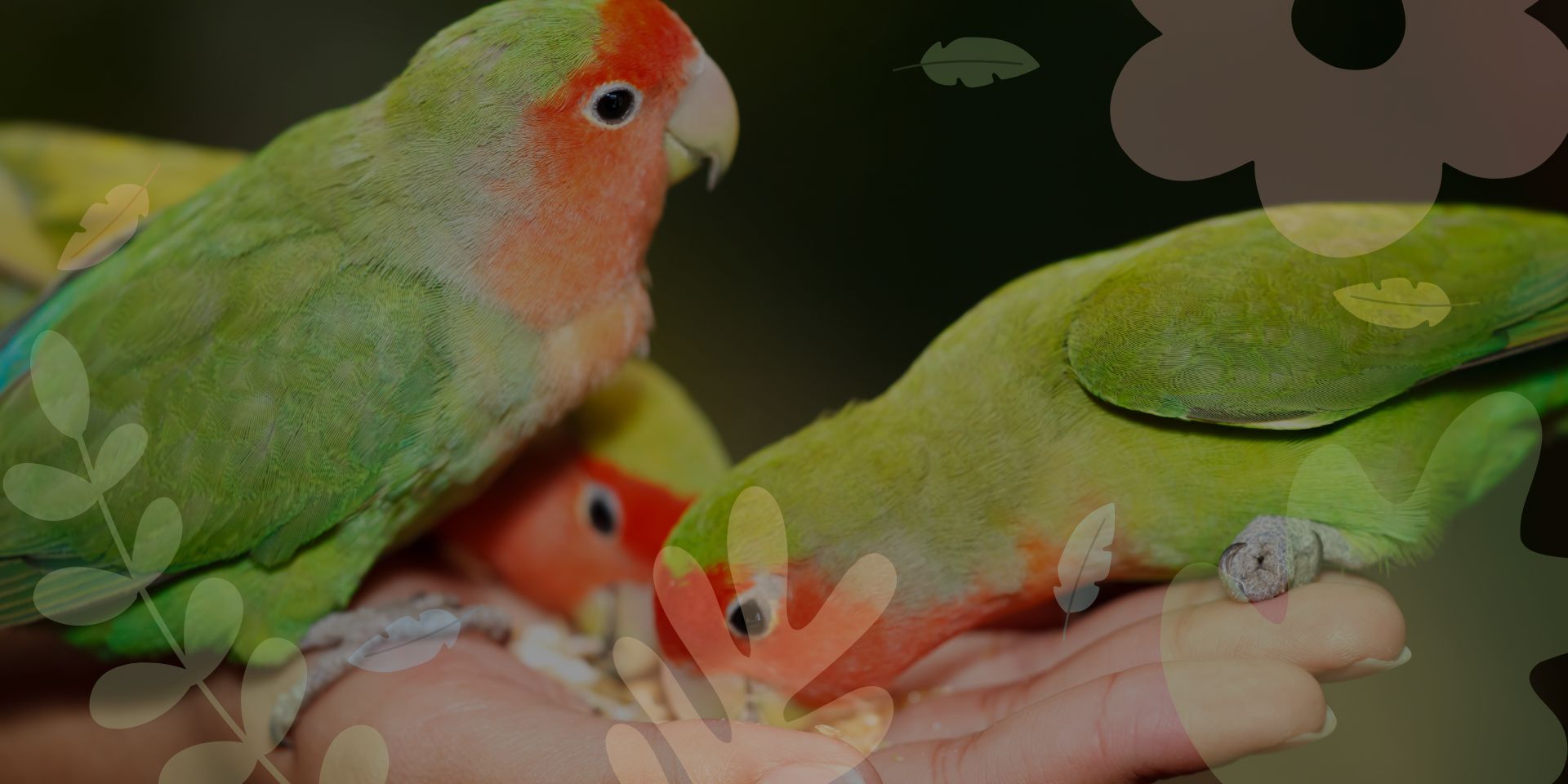Getting your first pet parrot is an exciting adventure! Parrots are intelligent, curious, and entertaining creatures that bring immense joy. One behavior many parrot owners quickly notice is their bird’s love for perching on their shoulder.
If you’re new to bird ownership, you may wonder why parrots are so drawn to sitting on shoulders and whether it’s a good idea to allow this. Read on to learn why birds love perching on shoulders, how to train your parrot for shoulder time, and the pros and cons of this common behavior.
Why Do Birds Like to Perch on Shoulders?
Parrots may have unique personalities, but their fondness for sitting on shoulders is almost universal. While we can’t know for sure why parrots love this behavior, it likely stems from their natural instincts and preferences. Here are some possible reasons:
1. A Sense of Home
In the wild, parrots spend much of their time perched on tree branches. Shoulders mimic this experience by offering a stable, elevated surface that feels familiar and secure. Being close to their human also provides comfort and a sense of belonging.
2. Social Connection
Parrots are highly social animals that thrive on interaction. Sitting on your shoulder allows them to bond closely with you. They can cuddle, nuzzle, or even whisper in your ear, fulfilling their need for companionship.
3. Safety and Security
In the wild, parrots instinctively seek high vantage points to stay safe from predators. Your shoulder provides an elevated position where they feel protected and can survey their surroundings. This sense of security makes shoulders a favorite spot for many birds.
4. Curiosity and Exploration
Parrots are naturally inquisitive. Perching on your shoulder gives them a front-row seat to your activities, satisfying their curiosity and helping them feel involved in your day-to-day life.
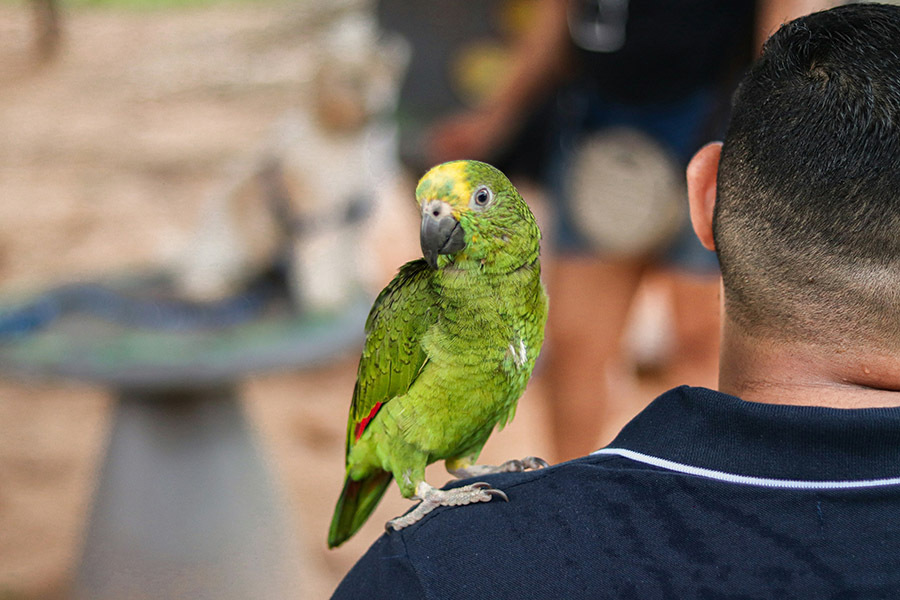
How to Shoulder Train Your Parrot
While shoulder perching can strengthen your bond with your bird, it’s important to train your parrot properly to ensure positive interactions. Here are the steps to follow:
Step 1: Build Trust
Start by earning your bird’s trust through regular interaction. Ensure they are comfortable stepping onto your hand before introducing shoulder training.
Step 2: Use Positive Reinforcement
Offer treats or verbal praise to encourage your bird to step onto your hand. Once they are comfortable, gradually guide them to your shoulder, rewarding them when they comply.
Step 3: Teach Commands
Train your parrot to respond to simple commands like “Up” (to step onto your hand) and “Down” (to move off your shoulder). Consistent verbal cues and gestures will help them understand what’s expected.
Step 4: Observe Body Language
Pay close attention to your bird’s body language during training. Signs of stress or discomfort, such as fluffed feathers or a defensive posture, indicate it’s time to pause and reassess.
Is It Safe to Let My Parrot Sit on My Shoulder?
While allowing your bird on your shoulder can be a rewarding experience, it’s not without risks. Here are some potential concerns:
- Bites and Injuries: Parrots have strong beaks that can cause significant injuries if they bite. Being close to your face increases the risk of bites to sensitive areas like your ears, nose, or lips.
- Startling Behavior: Parrots are easily spooked by sudden noises or movements. A startled bird may scream, flap its wings, or react defensively, potentially leading to accidents.
- Jewelry and Accessories: Parrots are curious and may chew on glasses, earrings, or necklaces. This can result in broken items or accidental injuries.
- Dominance Issues: Some parrots may become overly possessive or dominant when allowed unrestricted access to your shoulder. Establishing boundaries and proper training can prevent this behavior.
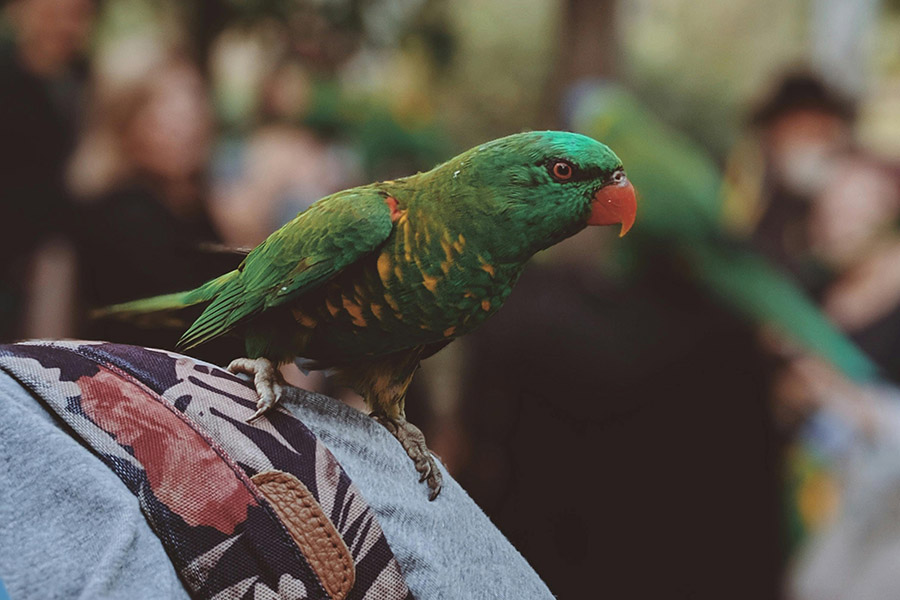
The Do’s and Don’ts of Shoulder Perching
Do:
- Allow your bird on your shoulder as a reward for good behavior.
- Use shoulder time to strengthen your bond and reduce boredom.
- Observe your parrot’s body language to ensure they’re comfortable.
Don’t:
- Permit shoulder perching without proper training.
- Allow untrained birds to perch on your shoulder, as they may become difficult to control.
- Wear accessories that your bird might chew on or pull.
- Take your bird outdoors on your shoulder without a harness or carrier.
How to Get Your Parrot Off Your Shoulder
Sometimes, birds become reluctant to leave your shoulder. Here are some tips to encourage them to step down:
- Offer a Treat: Use a favorite snack to lure them onto your hand or another perch.
- Introduce a Toy: Distract your parrot with a toy placed just out of reach.
- Use Commands: If they’ve been trained, use the “Up” or “Down” command to guide them.
- Stay Calm: Avoid showing frustration, as this can escalate the situation. Patience and consistency are key.
Can I Take My Bird Outdoors While Perched on My Shoulder?
Taking your bird outside on your shoulder is not recommended due to the high risk of escape. Even well-trained parrots can be startled by unfamiliar sights or sounds, causing them to fly away. Always use a harness or carrier when bringing your bird outdoors.
Final Notes
Perching on shoulders is a natural behavior for many parrots and can enhance the bond between you and your bird. However, it’s essential to approach this activity with care and proper training. Here are the key takeaways:
- Shoulder perching provides parrots with a sense of security, social connection, and involvement.
- Training and observing your bird’s behavior are crucial to ensuring positive experiences.
- Be mindful of the risks, and establish boundaries to prevent accidents or undesirable behavior.
With patience and understanding, allowing your parrot on your shoulder can become a joyful part of your relationship. Enjoy the journey of building trust and companionship with your feathered friend!


